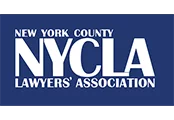Damage to property can take a great many forms under existing laws. Property damage is a serious issue that can be penalized under different kinds of law in different states. New York state officials have recognized varying types of potential damage to property. These laws pertain to any damage to property that is owned by another person. One of the many issues that is covered under such laws is what is known as making graffiti. This is defined under law in highly specific terms. The term graffiti covers any form of deliberate property defacing. People can be found guilty of this offense if they willfully decide to use draw, paint, etch, cover or otherwise place an unwanted mark of any kind on any form of public or private property. The law defines making graffiti as the act of making graffiti on the property of someone else that is not owned by that person. Those who do so do can get in trouble if they do not have permission from the property’s owner.
For example, if someone gets angry that they were arrested unfairly by local authorities, the person may choose to react to this situation by choosing to deliberately spray paint graffiti on spaces such as a church and the arresting officer’s home that have insulting messages about members of the community. Under state laws, the person in question can be prosecuted for such actions. The person may be prosecuted under state laws for additional offenses including trespass that may also happen during this time. In addition, they can also be prosecuted under other laws that are related to the case. An offender may be prosecuted for possession of graffiti instruments. They can also be charged with what is known as criminal mischief in the forth degree, a set of circumstances that may lead to yet more legal problems that can created added time on the person’s initial sentence.
Those who may be charged with such issues can find it possible to muster certain defenses under state laws. There are several possible defenses for such actions. For example, those who can show that they personally under the property in question then they have a defense that will stand up in court and lead to the dismissal of the charges. The same is true if the person in question can demonstrate that they had permission to use the property as they did when they chose to make such a mark on it. People who intend to make this defense should keep in mind that it is important to illustrate the type of permission they had in advance before they began.
People can also offer the defense that they did not mean to harm the property but rather to make it better. This is another kind of defense that can also be hard to maintain, particularly if the person in question did not have any form of permission from the owner to do the activities they did at that time. Anyone who is faced with this kind in issue should be aware that such an issue is considered what is known as a Class A misdemeanor. Potential legal penalties may include up to a year in jail. However, most legal authorities are more likely to consider other forms of punishment. For example, the person convicted of this offense may be sentenced to probation for a period of several years. In addition to being on probation, the courts may also require all those who have been convicted of this crime to pay for any damages they have caused the property owners. The amount of this sum can include the cost of removing the graffiti. It can also include any additional costs that the property owner may have incurred as a result of the removal of the graffiti. This is why help from skilled legal counsel is extremely important for this kind of charge


















